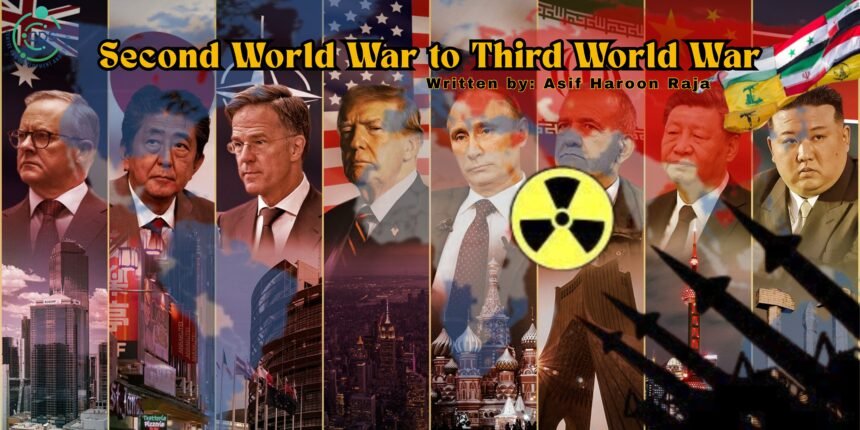From Multipolarity to Unipolarity
The global order during World War I (1914–1918), which claimed 20 million lives, was multipolar. In 1920, the League of Nations was established, but it failed to prevent the Second World War (1939–1946), which resulted in 70–80 million deaths. In 1945, the United Nations replaced the League. The war culminated in the United States dropping two nuclear bombs on Hiroshima and Nagasaki in 1946, killing millions.
- From Multipolarity to Unipolarity
- Shift in Pakistan’s Foreign Policy
- Arab-Israeli Conflict and Egypt’s Role
- Islamic Revolution in Iran and Rise of IRGC
- The Iraq-Iran War (1980–1988)
- Gulf War and Iraq’s Downfall
- Expansion of the Shia Arc
- Targeting of Islamic States
- 9/11 and Shift to Afghanistan
- China’s Rise in Power
- Russia’s Rejuvenation
- U.S. – China Rivalry
- India-Pakistan Short War
- Iran’s Nuclear Program and Israeli Aggression
- U.S. Joins the Conflict
- Why the Ceasefire?
- Lessons from the 12-Day War
- The writer, Brig (R) Asif Haroon Raja, is a war veteran, defence and political analyst, international columnist, author of five books, Chairman of Thinkers Forum Pakistan, and Patron-in-Chief of CDS Think Tank. He is a frequent speaker at seminars and television programs.
- *The views and opinions expressed herein, and any references, are those of the author and do not necessarily reflect the editorial policy of the Centre for Development and Stability (CDS).
After WWII, the bipolar world order emerged, marked by the U.S.–Soviet rivalry. To avoid mutual nuclear destruction, both powers engaged in a Cold War instead of direct conflict. Yet, both expanded their global influence via invasions, clandestine operations, and regime changes.
The U.S. established over 800 military bases and launched 22 invasions during and after the Cold War. It dominated sea lanes and global choke points through six unified military commands.
NATO’s expansion—from 12 members in 1949 to 31—continued after the Soviet Union’s dissolution. The USSR’s Warsaw Pact, once with 23 members, collapsed in 1991, leading to the independence of 15 Soviet republics.
With this, the U.S. emerged as the lone superpower and sought to maintain hegemony for a century. NATO became the world’s strongest military alliance. The U.S. also elevated Israel and India to regional superpowers—Israel in the Middle East (ME), and India in South Asia—to serve as proxies. Both countries became nuclear-armed states pursuing expansionist agendas: Greater Israel and Akhand Bharat, respectively.
Shift in Pakistan’s Foreign Policy
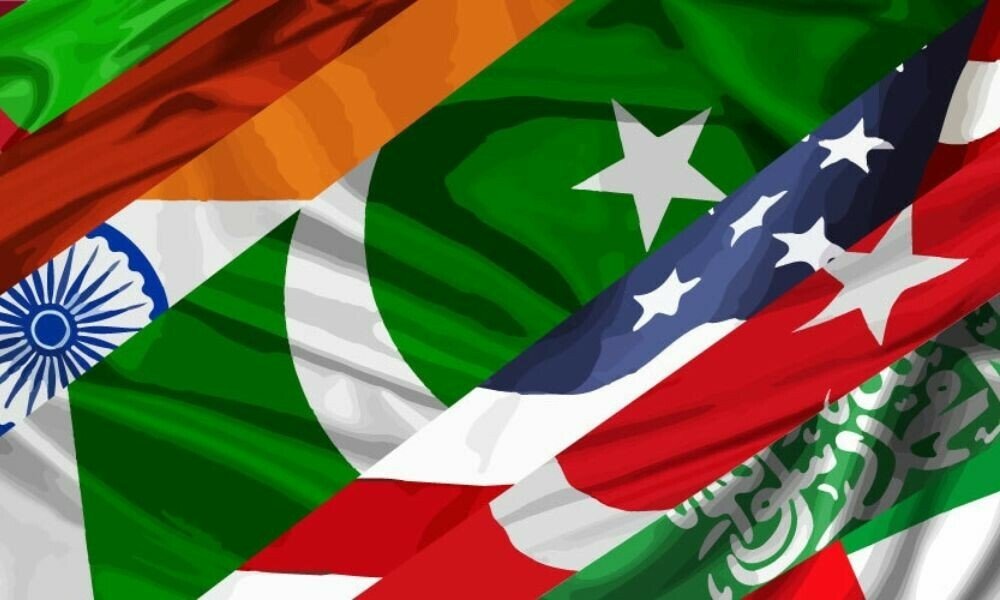
After Pakistan’s independence in 1947, two-thirds Kashmir illegally occupied by India, became a bone of contention between the two arch rivals and resulted in three major wars.
Confronted by threats from India, Afghanistan, and the USSR, Pakistan abandoned its non-aligned stance and joined Western pacts in 1954–55. In return for U.S. economic and military support, Pakistan became dependent and gradually lost autonomy.
Washington used sanctions and betrayals to leverage Islamabad as a rental state. Trust and mutual respect were absent, and the relationship remained transactional.
Arab-Israeli Conflict and Egypt’s Role
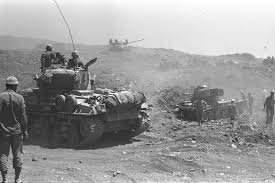
The Arab-Israeli conflict began in 1948 when Israel was carved out of Palestine, displacing Palestinians. This led to wars in 1948, 1956, 1967, and 1973. Despite combined Arab resistance, Israel prevailed due to Western support. The Palestine Liberation Organization (PLO), under Yasser Arafat, emerged, with its militant wing Al-Fatah launching armed resistance.
The U.S. divided the ME into ‘Moderates’ and ‘Radicals’ and prioritized control over its vast energy resources.
Egypt, with its long history and powerful military, was central to Arab unity. In the 1967 Six-Day War, Israel seized key territories.
Egypt avenged its defeat partially during the 1973 war by crossing the Bar Lev Line and establishing bridgeheads across the Suez Canal. A ceasefire was brokered by U.S. Secretary of State Henry Kissinger.
In 1979, Egypt signed a peace treaty with Israel at Camp David, regaining the Sinai Peninsula. However, the move alienated Egypt from the Arab League. Iraq, under Saddam Hussein, assumed Arab leadership.
Islamic Revolution in Iran and Rise of IRGC
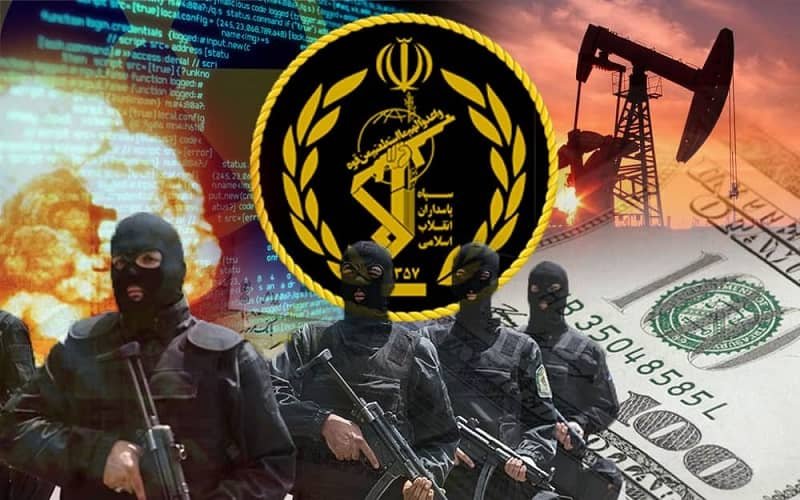
In February 1979, Imam Khomeini led an Islamic revolution in Iran, toppling U.S.-backed Reza Shah Pahlavi. The new regime established the Islamic Revolutionary Guard Corps (IRGC), alienating both the U.S. and Israel. Washington’s ME strategy, reliant on Iran and Saudi Arabia, collapsed.
The Iraq-Iran War (1980–1988)
With Iran lost as an ally, the U.S. and USSR armed Iraq to counter Iran’s Shia revolution, which was stirring unrest in Central Asia. The war claimed over one million lives and ended in stalemate.
Iran began developing indigenous military capabilities, including ballistic missiles.
Gulf War and Iraq’s Downfall
In 1990, the U.S. ambassador allegedly encouraged Saddam to settle oil disputes by invading Kuwait. Iraq’s annexation of Kuwait led to massive Western military deployment in the Gulf.
In 1991, the U.S.-led coalition decimated Iraq’s military. Sanctions and embargoes followed, killing an estimated 5 million Iraqis.
Expansion of the Shia Arc
Feeling vulnerable, Iran built a regional “Shia arc,” aligning with Syria, Hezbollah in Lebanon, the Houthis in Yemen, and other groups. Iran’s influence extended into Iraq and parts of Saudi Arabia.
This growing power triggered alarm in Israel, the U.S., and GCC states, leading to increasing tensions and sectarian polarization.
Targeting of Islamic States
Israel saw Iraq as a continued threat. Jordan signed a peace treaty with Israel in 1994. Seven Muslim countries—Libya, Syria, Lebanon, Yemen, Sudan, Somalia, and Iran—were designated for destabilization and regime change.
The goal was to redraw the ME map and to pave the way for Greater Israel.
9/11 and Shift to Afghanistan
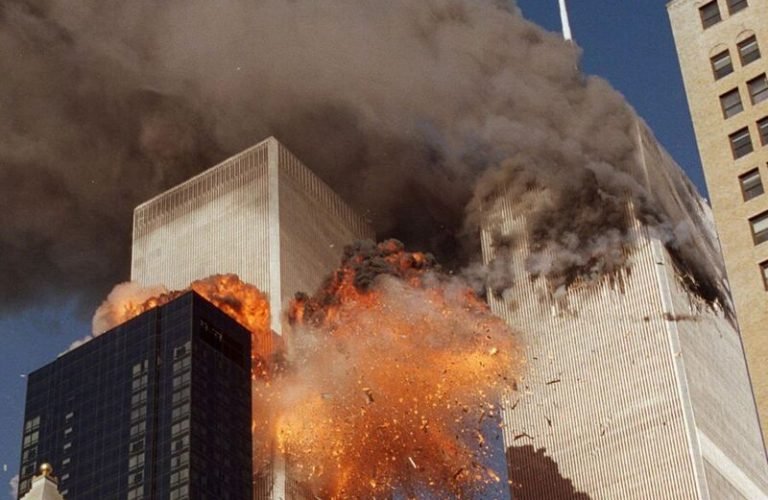
The 9/11 attacks provided the pretext to launch the “Global War on Terror.” The U.S. invaded Afghanistan in 2001, then Iraq in 2003 under false pretences.
The objectives were manifold: contain China and Russia, access Central Asia, monitor Iran.
A nexus of CIA, MI-6, Mossad, BND, RAW, NDS was formed in Kabul to denuclearize Pakistan through covert operations.
Iraq’s Destruction and Rise of ISIS
Despite no WMDs, Iraq was invaded, Saddam was executed, and the state fragmented.
A sectarian war erupted, and ISIS—allegedly CIA-backed—emerged in 2006 to reconfigure ME borders. Hundreds of thousands died.
Arab Spring and Libya
Under the guise of democracy and human rights, the Arab Spring led to regime changes in several ME nations. Libya, under Qaddafi, was destroyed despite cooperation with the West.
Qaddafi’s ambition to free Africa from Western influence led to his brutal death in 2011.
Civil War in Syria
The Assad regime, a strong anti-Israel force, faced U.S.-backed insurgencies beginning in 2011. The civil war devastated Syria.
Despite Russian intervention, Assad fell in late 2024, and a rebel leader took over. Israel seized territory from the Golan Heights.
China’s Rise in Power
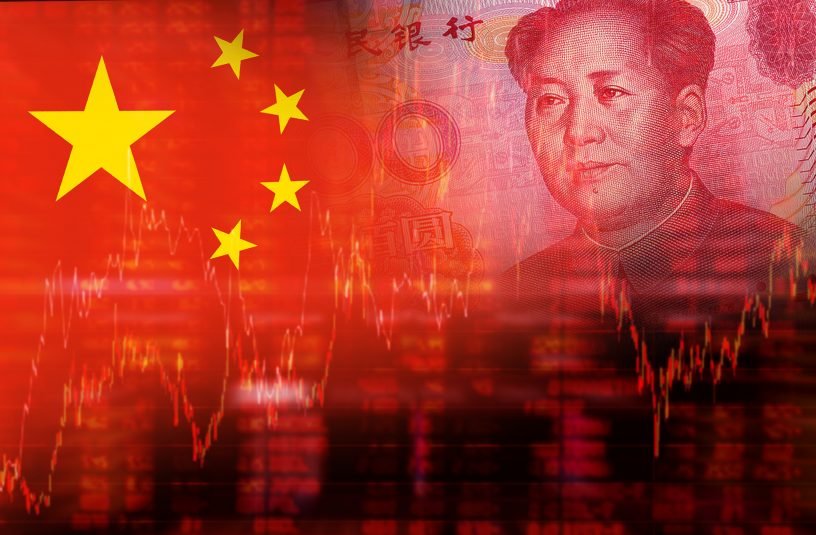
China’s meteoric rise as a global power over the past four decades has transformed the international order. From a primarily agrarian economy in the 1970s, China has become the world’s second-largest economy, the largest trading nation, and a technological competitor to the West.
Its Belt and Road Initiative (BRI) has expanded its influence across Asia, Africa, and Europe, while its growing military strength, especially in the South China Sea, signals its ambition to assert regional hegemony and challenge U.S. dominance in the Indo-Pacific.
China’s strategic partnerships with Russia, Pakistan, Iran, and several Global South nations further reflect its vision of a multipolar world. However, its assertiveness in regional disputes, human rights issues, and trade imbalances have sparked tensions with the United States and its allies, contributing to an intensifying geopolitical rivalry.
Russia’s Rejuvenation
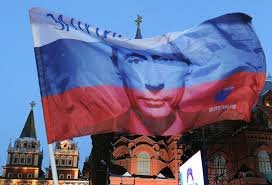
Following the disintegration of the Soviet Union in 1991, Russia experienced a period of political turmoil, economic collapse, and diminished global influence. However, under the leadership of Vladimir Putin since 2000, Russia has gradually regained its strength and international standing.
By leveraging its vast energy resources, revamping its military capabilities, and reasserting its geopolitical interests, Russia has positioned itself as a formidable global actor.
Its interventions in Georgia (2008), Crimea and Eastern Ukraine (2014), and Syria (2015) marked its return to strategic assertiveness.
Moscow has also deepened ties with China, Iran, and other non-Western states to counterbalance NATO and U.S. influence.
Despite facing crippling Western sanctions and diplomatic isolation over the Ukraine war, Russia continues to project power, challenge Western hegemony, and pursue a multipolar global order, underscoring its resurgence as a pivotal force in global geopolitics.
U.S. – China Rivalry
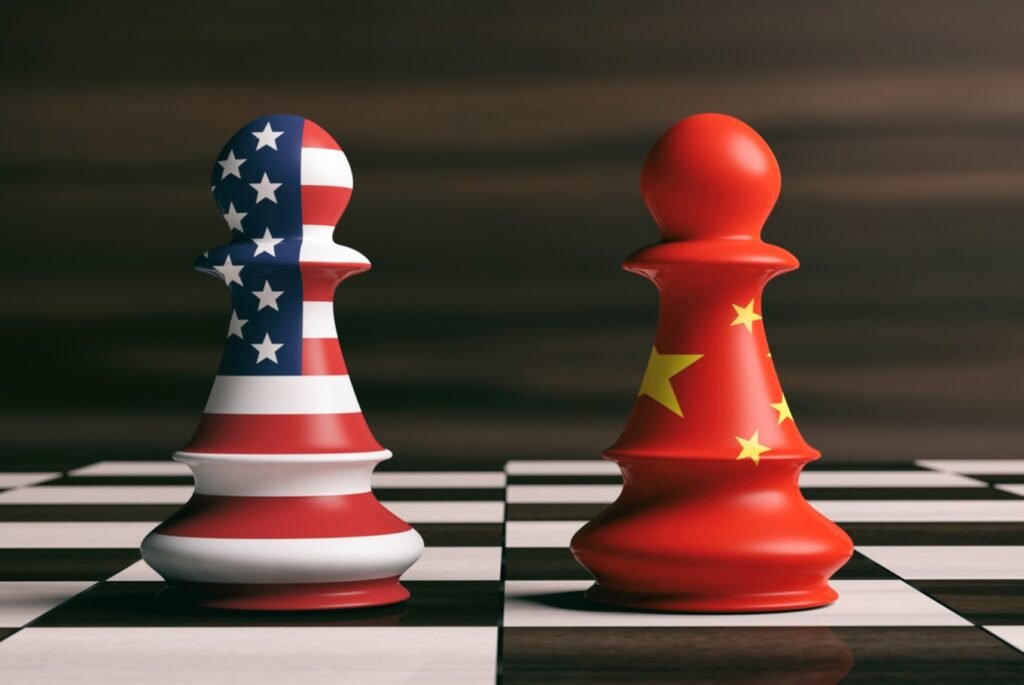
The U.S.-China rivalry has emerged as the defining geopolitical contest of the 21st century, shaping global economic, military, and technological landscapes. Rooted in ideological, strategic, and economic differences, the rivalry intensified as China’s rise began to challenge American supremacy.
Washington views Beijing’s assertiveness in the Indo-Pacific, its militarization of the South China Sea, and its growing influence through initiatives like the Belt and Road as direct threats to the U.S.-led international order.
Conversely, China perceives U.S. alliances, military encirclement, and support for Taiwan as efforts to contain its rise. The competition spans across trade wars, technological innovation, cyber capabilities, and control over critical supply chains.
While both nations remain economically interdependent, their mutual distrust and conflicting worldviews have sparked a new era of strategic competition with global implications, raising concerns over the potential for a Cold War-like confrontation, or direct military conflict.
India-Pakistan Short War
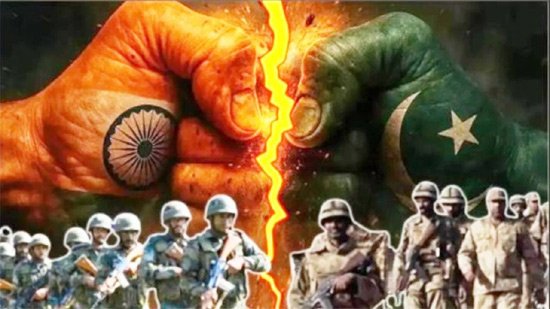
After staging a false flag operation in Pahalgam on April 22, 2025, India ratcheted up war rhetoric, dismissing all advice toward restraint. Modi’s arrogance led him to ignore Pakistan’s clear warning: do not test a nuclear-armed state.
India assumed that Pakistan’s internal instability, economic struggles, and military fatigue from counterterrorism efforts would ensure an easy victory.
It over-estimated its own strength and under-estimated Pakistan’s resilience.
India’s conduct was aggressive, irresponsible, and disproportionate. In contrast, Pakistan demonstrated restraint and strategic discipline, targeting only legitimate military infrastructure.
Pakistan’s strategic patience, calibrated responses, and professional military conduct in the four-day conflict from 7-10 May revealed its maturity as a nuclear power.
India, blinded by hubris, exposed its own vulnerabilities. In trying to corner Pakistan, India lost the strategic narrative, its deterrence credibility, and its moral high ground.
The world now sees Pakistan not as a reckless actor, but as a responsible power capable of restraint, resolve, and decisive defence.
While the Indo-Pakistan tensions were still festering, Israel-Iran conflagration made the already turbulent Middle East more explosive.
Iran’s Nuclear Program and Israeli Aggression
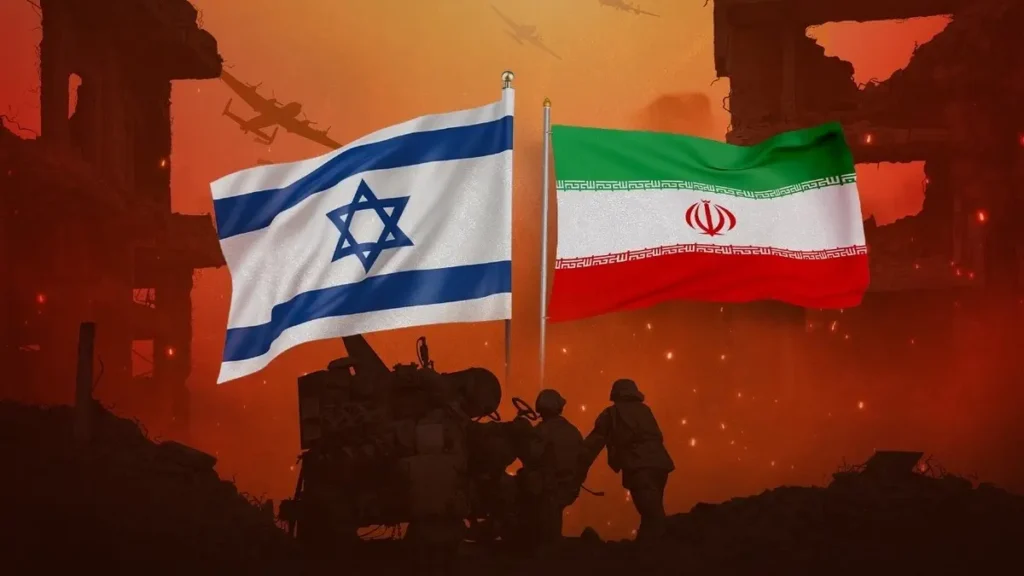
After Gen. Qasem Soleimani’s assassination in 2020, Iran resumed its nuclear program.
Israel demonized Iran’s nuclear ambitions.
Espionage in Tehran
The Mossad and RAW worked in tandem for 25 years to weaken Iran’s air defences through espionage.
A Mossad-RAW operation in Tehran used AI-powered drones, cyberattacks, and internal collaborators to paralyse Iran’s defence.
After launching Operation Rising Lion in early hours of June 13, 2025, Israeli jets then bombarded Iranian nuclear sites.
Iran’s Belated Response
Iran responded after 18 hours, striking northern Israel, including defence ministry, Mossad HQ and military assets.
U.S. Joins the Conflict
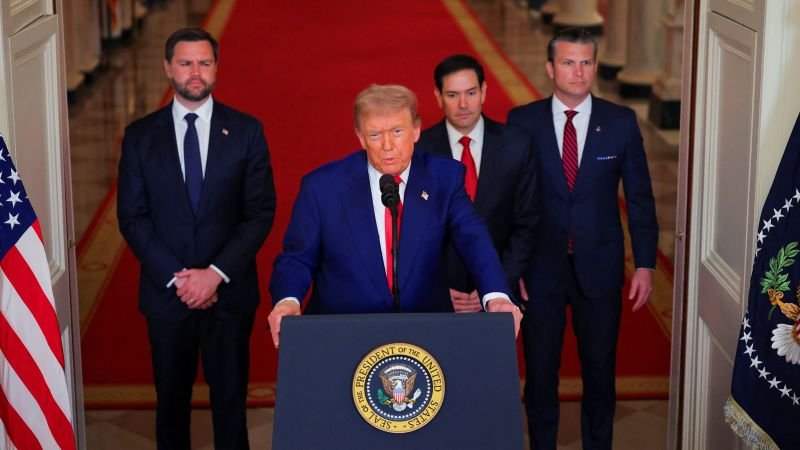
Despite a temporary ceasefire brokered by Pakistan, the U.S. entered the war on June 21, 2025, using B-52 stealth bombers and Tomahawk cruise missiles to target Iranian nuclear sites.
Trump’s unpredictability reignited global tensions.
Losses Incurred
Israel admitted that it was hit by 50 Irani missiles causing 28 deaths (actual deaths were much more). Iran suffered 900 fatalities.
Why the Ceasefire?
Russia reportedly offered Iran nuclear warheads. Fearing regional escalation or World War III—possibly involving China and Russia—Trump called off the assault.
Israel, which couldn’t afford to fight a long war of attrition, agreed, and a ceasefire was declared.
Lessons from the 12-Day War
- Iran withstood Israel’s attack and preserved its nuclear program.
- Israeli invincibility was undermined by Iran’s long-range retaliatory strikes.
- India betrayed Iran by siding with Israel.
- Pakistan played a stabilizing role and facilitated the ceasefire.
- Pakistan’s image improved globally; its military professionalism was vindicated.
- Iran received genuine support only from Pakistan.
- Tehran may reconsider its support for anti-Pakistan elements.
- Strong armed forces are vital for national sovereignty.
- Pakistan must remain vigilant against India’s future aggression.
- Pakistan’s information warfare exposed Indian propaganda.

